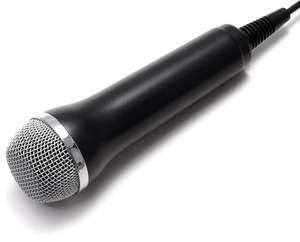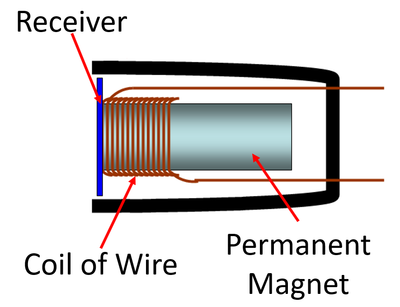Difference between revisions of "Microphone"
| Line 32: | Line 32: | ||
| style="height:20px; width:200px; text-align:center;" |A [[diagram]] of a [[microphone]]. | | style="height:20px; width:200px; text-align:center;" |A [[diagram]] of a [[microphone]]. | ||
|} | |} | ||
| + | |||
| + | ===References=== | ||
| + | ====AQA==== | ||
| + | |||
| + | :[https://www.amazon.co.uk/gp/product/0008158770/ref=as_li_tl?ie=UTF8&camp=1634&creative=6738&creativeASIN=0008158770&linkCode=as2&tag=nrjc-21&linkId=ec31595e720e1529e49876c3866fff6e ''Microphone, moving-coil, pages 195, 262, GCSE Physics; Student Book, Collins, AQA ''] | ||
| + | :[https://www.amazon.co.uk/gp/product/019835939X/ref=as_li_tl?ie=UTF8&camp=1634&creative=6738&creativeASIN=019835939X&linkCode=as2&tag=nrjc-21&linkId=57e96876985fc39b1a3d8a3e3dc238b6 ''Microphones, page 225, GCSE Physics; Third Edition, Oxford University Press, AQA ''] | ||
| + | :[https://www.amazon.co.uk/gp/product/1471851370/ref=as_li_tl?ie=UTF8&camp=1634&creative=6738&creativeASIN=1471851370&linkCode=as2&tag=nrjc-21&linkId=01c69b0ae058f809cf636033e6ba793e ''Microphones, page 235, GCSE Physics, Hodder, AQA ''] | ||
| + | :[https://www.amazon.co.uk/gp/product/1782945970/ref=as_li_tl?ie=UTF8&camp=1634&creative=6738&creativeASIN=1782945970&linkCode=as2&tag=nrjc-21&linkId=a120d24dcc7cc7a58192069a3aafc1d2 ''Microphones, page 307, GCSE Physics; The Complete 9-1 Course for AQA, CGP, AQA ''] | ||
| + | :[https://www.amazon.co.uk/gp/product/178294558X/ref=as_li_tl?ie=UTF8&camp=1634&creative=6738&creativeASIN=178294558X&linkCode=as2&tag=nrjc-21&linkId=f0dfb66dafcb0c6e9449e7b1a4ae1ac312 ''Microphones, page 97, GCSE Physics; The Revision Guide, CGP, AQA ''] | ||
Revision as of 16:46, 8 November 2019
Contents
Key Stage 3
Meaning

A picture of a microphone.
A microphone is an electrical device that turns the vibration of a sound into an electrical signal.
About Microphones
- Sound transfers information which a microphone converts into an electrical signal.
- Microphones use a coil of wire and a permanent magnet to turn a vibration into an electrical signal.
- When the receiver vibrates the coil of wire moves around the permanent magnet to make a current in the coil of wire.
| A diagram of a microphone. |
Key Stage 4
Meaning

A picture of a microphone.
A microphone is an electrical device that turns the vibration of a sound into an electrical signal using the generator effect.
About Microphones
- Sound transfers information which a microphone converts into an electrical signal.
- Microphones use a coil of wire and a permanent magnet to induce a current in the coil when receiver vibrates.
- When the receiver vibrates the coil of wire moves around the permanent magnet to make a current in the coil of wire.
| A diagram of a microphone. |
References
AQA
- Microphone, moving-coil, pages 195, 262, GCSE Physics; Student Book, Collins, AQA
- Microphones, page 225, GCSE Physics; Third Edition, Oxford University Press, AQA
- Microphones, page 235, GCSE Physics, Hodder, AQA
- Microphones, page 307, GCSE Physics; The Complete 9-1 Course for AQA, CGP, AQA
- Microphones, page 97, GCSE Physics; The Revision Guide, CGP, AQA
